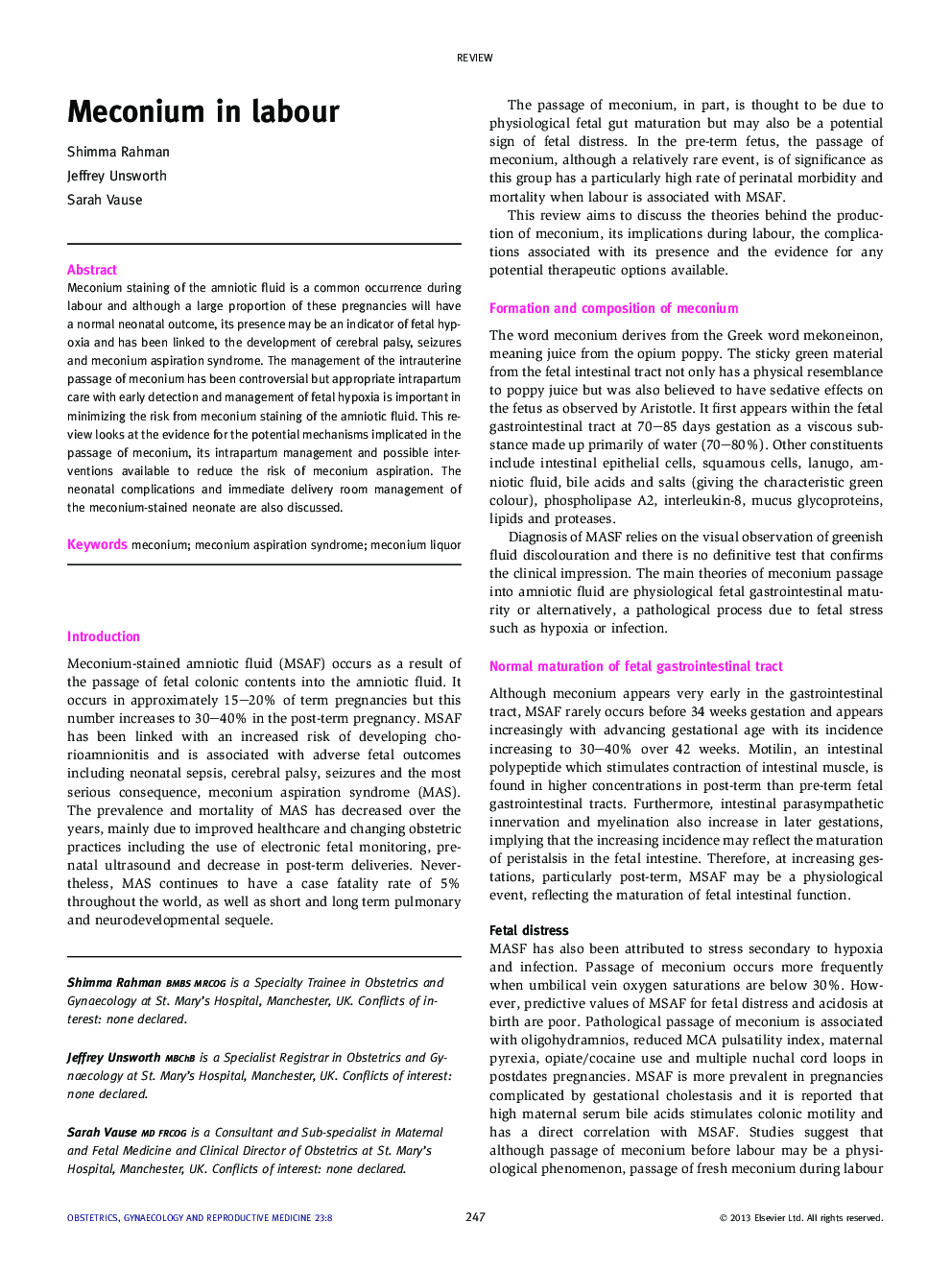| Article ID | Journal | Published Year | Pages | File Type |
|---|---|---|---|---|
| 3966878 | Obstetrics, Gynaecology & Reproductive Medicine | 2013 | 6 Pages |
Meconium staining of the amniotic fluid is a common occurrence during labour and although a large proportion of these pregnancies will have a normal neonatal outcome, its presence may be an indicator of fetal hypoxia and has been linked to the development of cerebral palsy, seizures and meconium aspiration syndrome. The management of the intrauterine passage of meconium has been controversial but appropriate intrapartum care with early detection and management of fetal hypoxia is important in minimizing the risk from meconium staining of the amniotic fluid. This review looks at the evidence for the potential mechanisms implicated in the passage of meconium, its intrapartum management and possible interventions available to reduce the risk of meconium aspiration. The neonatal complications and immediate delivery room management of the meconium-stained neonate are also discussed.
